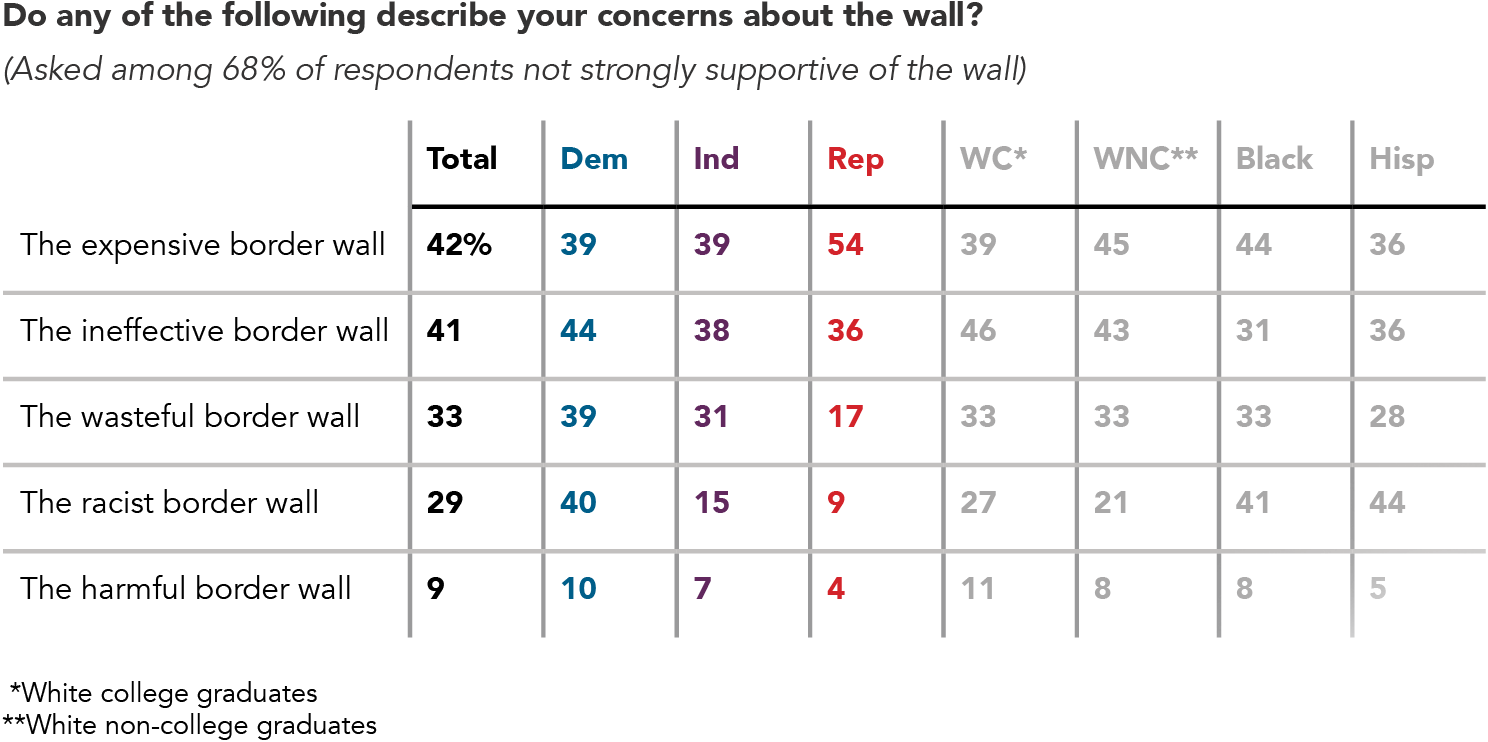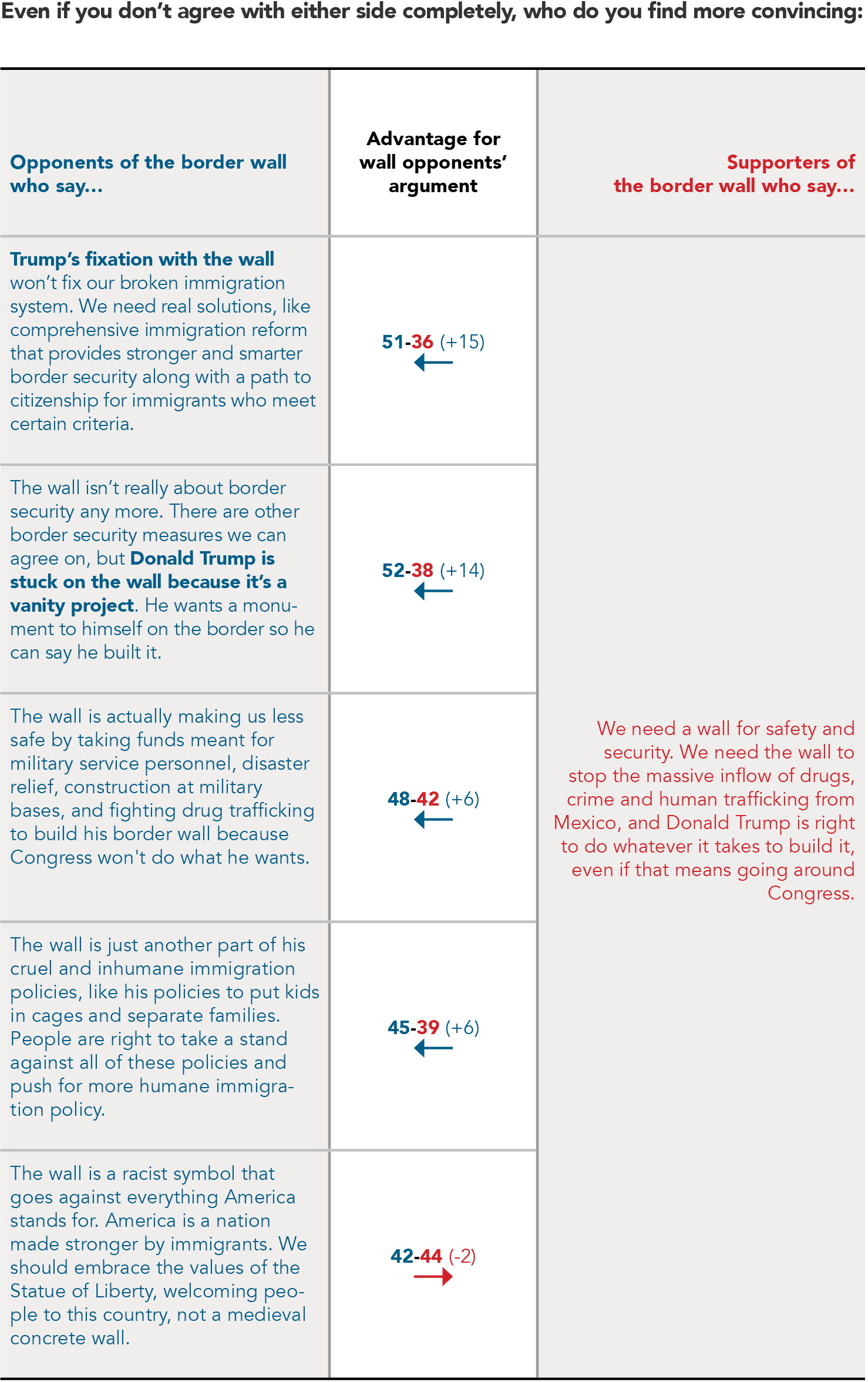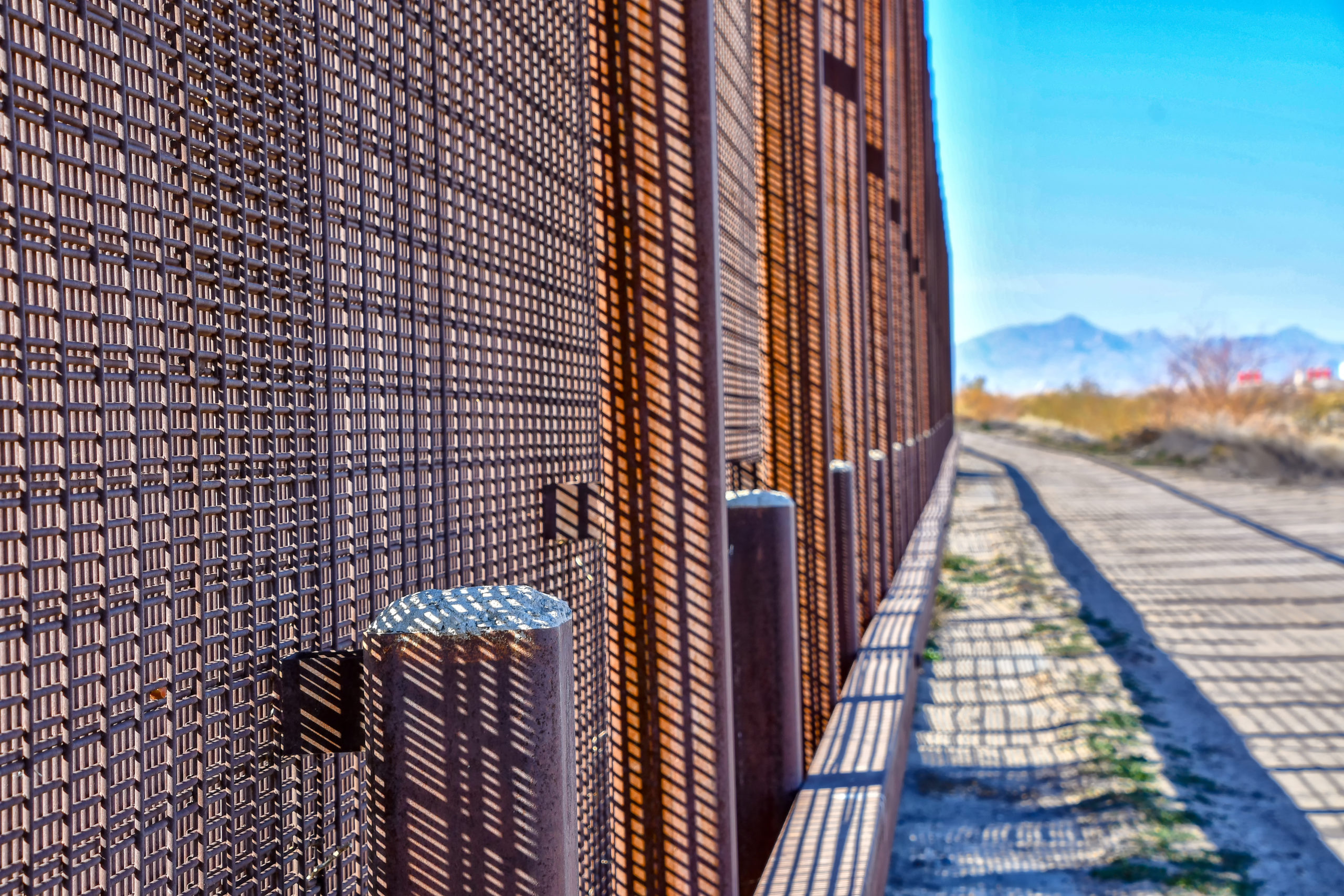Every month, we pick a few topics for exploration. The topics we select aren’t meant to cover every issue area facing the progressive community, but rather to give actionable advice on how to talk about key issue areas. We’ll be sharing our findings throughout the month, and in this volume we focus on the border wall.
Of course, immigration is an incredibly complex topic and the implications for advocates and other progressive communicators are vast. In this memo we aim to address just one part of the conversation – Trump’s border wall – and hope to provide useful insight and guidance.
President Trump has proposed building a wall along the U.S.-Mexico border. How can progressives make the most persuasive case against it?
Progressives should argue the president’s 20 billion-dollar border wall is a poor use of taxpayer money and not the best way to keep Americans safe.
Argue a wall on the U.S.-Mexico border would be ineffective, expensive, and wasteful.
Americans oppose building a wall along the U.S. border with Mexico by a narrow 4-point margin (46% support, 50% oppose). In the same survey, approval of Trump is just 41%, meaning the wall could provide the president a tool to win over skeptics if progressives don’t make their case. However, there is a strong case to be made against the border wall:
- The wall is ineffective and fails to address the major safety threats Americans face.
- The wall is expensive and would cost taxpayers over 20 billion dollars – a waste of limited resources.
- There are better approaches to securing our ports of entry and the border.
There are two additional arguments that are well-received by progressive audiences, but less effective at winning with the majority of Americans on the specific topic of the wall: the wall is racist, or that it goes against American values. However, it is worth noting for progressives who want to focus on Trump’s poor record on race relations, there are other examples besides the wall that the public finds more troubling (a topic that we will explore in depth in our next release on Navigator).
Ineffective: The wall would fail to address the major safety threats we face.
Public safety is often at the center of President Trump’s defense of the border wall, but it can also be at the center of the argument against it. Many progressives have argued a wall along the southern border does nothing to address important security concerns at ports of entry like seaports and airports, and Americans generally agree. Americans are also, by a clear margin, likely to see other public safety threats – like gun violence – as bigger safety threats.

Americans, including those who don’t identify with either political party, find it credible that the wall is not the best way to keep Americans safe. In fact, a plurality side with the argument that the wall will make the country less safe rather than more safe (48% to 38%) because it diverts funding from other important security priorities. However, it’s even more persuasive (54% to 38%, in a split sample experiment) to simply argue the wall is “an ineffective way to secure the border and keep us safe.”

Expensive: The wall will cost 20 billion dollars – and because it’s ineffective, it wastes taxpayer money.
The ineffectiveness of the wall is just one part of the equation: progressives should also make clear that the wall is expensive, meaning the focus on building a physical wall along the entire border has consequences. The argument that there are “better ways to spend taxpayer money” is highly credible (64% say this is probably or definitely true) as is the claim that the wall is simply “a waste of money” (54%).
Respondents who were not strongly supportive of the wall to begin with (68% of the public overall) actually selected the wall’s price tag and wastefulness as the strongest single argument against the wall. Together, both of these arguments ranked higher than arguments more focused on racism or American values – and this was true across the political spectrum, with “20 billion dollars” rising to the top among Democrats, independents, and Republicans alike.
One thing progressive talkers can start doing right now is referring to the border wall as the “20 billion-dollar wall” as often as possible. While this memo shows there is more nuance to the debate than that, attaching the price tag is an easy and memorable way to drive public opposition to Trump’s wall.
A 20 billion-dollar waste.

Expensive and ineffective.
A focus on the wall’s inability to achieve its purported objective at a reasonable cost resonates across many demographic groups. The charge of racism has salience among certain groups with progressive tendencies – particularly Hispanics – so that message may be resonant for targeted audiences. But even among the progressive base, the most broadly applicable description of the wall is that it is ineffective and expensive.

There are several ways to communicate about Trump’s relationship with the wall. It’s most persuasive to focus on his misplaced priorities rather than his prejudices.
Many Americans believe President Trump is racist, and some of his policies on immigration, such as family separation, are deeply unpopular. However, message testing in this survey suggests the arguments around race and values are not necessarily the most effective ones when it comes to the border wall policy.
To reach and persuade Americans who may be inclined to support a wall, but are not firmly decided, it can be more persuasive to emphasize the way the wall is an irrational fixation for the president – or even a “vanity project” – and bring in the arguments about the wall’s ineffectiveness and cost as well as alternative solutions for the immigration system.
Don’t let this become a debate between “The Wall” and “no border security.”
Something else that is clear: progressives should not let the other side frame the debate as a choice between “the wall” on the one hand, and “nothing.” This memo lays out effective arguments against the wall, but when framed as a choice between “A physical barrier along the entire U.S. border with Mexico” and “no increased border security,” the public splits 52% to 33% for the wall. If a middle option is offered (in this case, “Smarter border security using technology instead of physical barriers”), it beats the wall, 48% to 35%.
An important takeaway: Americans doubt the effectiveness of the wall, and many who support the wall are quick to change their minds when presented with better approaches.

About The Study
Global Strategy Group conducted a public opinion survey among a sample of 1,500 registered voters conducted September 11-16, 2019. The survey was conducted online, recruiting respondents from multiple opt-in online panel vendors. Respondents were verified against a voter file and special care was taken to ensure the demographic composition of our sample matched that of the national registered voter population across a variety of demographic variables.

